In the immortal words of the Chairman Of The Board, it was a very good year. So was last year, and the one before that and the one before that and so on. Why? Mostly, we can thank the disruptive, game-eating power of the Internet. The best thing that ever happened to music was the web-abetted collapse of the music industry’s one-size-fit-most paradigm and the death of radio as the prime determinant of what people like. Now people find music everywhere, it literally rains out of everything with an electric pulse, which has triggered a radical re-calibration of the vectors of popularity. These days even the most idiosyncratic sounds find their tribe sooner or later if they’re worth a damn. The Internet is good at keeping many things, but a secret is not one of them and good will out. We will not pretend our list is definitive or even close to it. There was loads of good music that did not make our naughty-or-nice list. You know where to find it. In the mean time, in no particular order, this is our favorite music of 2015. Quoth The Bard, “Let all the children boogie.”
____________
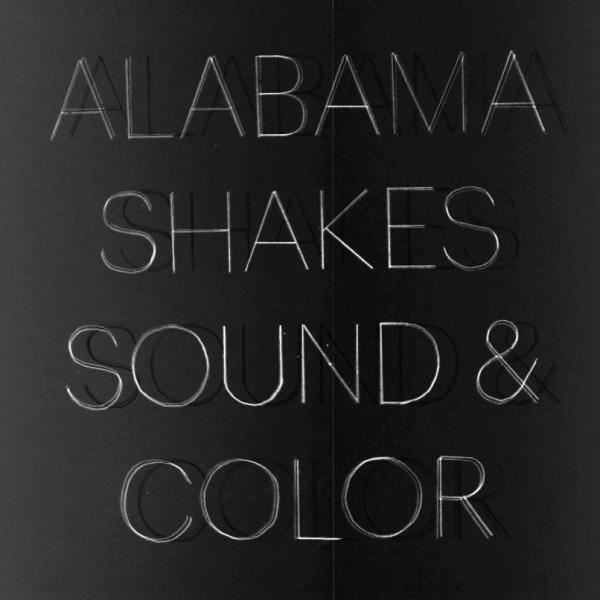
ALABAMA SHAKES
Sound & Color
(ATO)
Alabama Shakes was formed in 2009 in Athens, Alabama — often referred to as the Athens of Alabama — by a postal worker, a nuclear plant night watchmen, an animal clinic worker and a house painter as a viable alternative to watching the cars rust, which was the prevailing pastime in Athens at the time. Having weathered a dues-paying, teeth-cutting cover band purgatory of sports bars and country dives and all the mightier for it, the Shakes began building buzz when the breathless blogger hype proved not just believable but vastly understated. On 2012’s million-selling Boys And Girls, Alabama Shakes sounded like Exiles On Main Street with Aretha Franklin on lead vocals and Jagger on coke and tambourine. Or Lynyrd Skynyrd’s plane crashing into the Big Brother and the Holding Company’s tour bus. The sepia-toned Americana, tar-black blooze ecstasies and Muscle Shoals-inflected soul salvations of Boys And Girls blew huge smoking holes in the notion that you simply cannot make it in this business dressed in neckbeards and cat lady glasses no matter how possessed you play or how transcendental the sound you make. In a striking contrast to the debut, Sound & Color sounds like Nina Simone covering Bowie’s Station To Station (note the deep space setting of the video for the title track, see below), wedding muddy water rock n’ roll to the pneumatic wheeze of analog electronica. No longer just The Mouth That Roared, singer Brittany Howard mixes it up, too, alternately purring like a cat on a hot tin roof and shredding apocalyptic like Mary Clayton at the 3:06 mark of “Gimme Shelter.” What I find most puzzling is why Sound & Color was damned with faint praise by the same people who ejaculated all over the debut when it is clearly a giant step forward. In fact, it is almost certainly the best album released this year or next. — JONATHAN VALANIA
____________
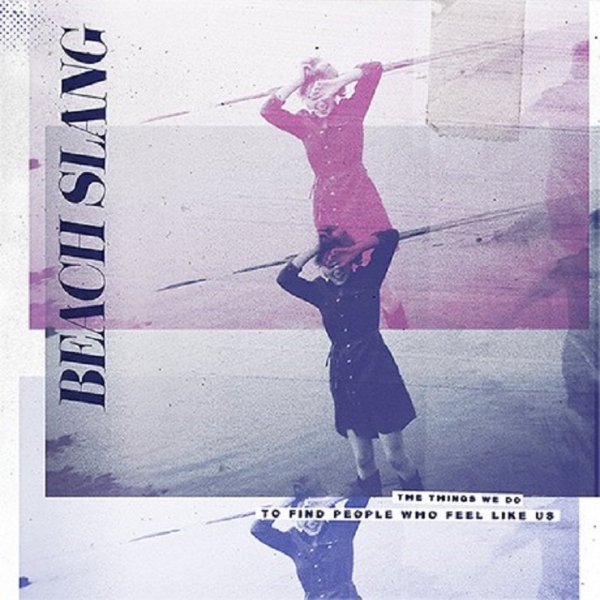
BEACH SLANG
The Things We Do To Find People Who Feel Like Us
(Polyvinyl Records)
What’s more DIY than making a classic in a genre that doesn’t need anymore classics? Not much, because you can’t have DIY without It, and Beach Slang has it. Hang on, though: The Things We Do To Find People Who Feel Like Us will take whatever ’80s/’90s indie reference you throw at it, thank you very much, and it’s definitely glad that you paid all that money to see that Replacements/Superchunk show at Festival Pier. Because nobody records rock ‘n’ roll this empathetic and real and rooted unless the goal is to Make It, which is certainly a step beyond Doing It. And frontman James Alex needs you, dear person, in one way or another, because all the anthems (start with “Noisy Heaven,” “I Break Guitars,” “Hard Luck Kid”) are not supposed to echo in a void. And maybe that’s the true meaning of It: These riffs are for you, these choruses are for you, this crackerjack rhythm section is for you, this stage banter is for you, this cool album cover is for you. Believe it. When’s the last time you could believe it? — JOE WARMINSKY
____________

SHAMIR
Ratchet
(XL Recordings)
Dance pop has given us a million faceless non-stars but it is an event worth celebration when an artist as vivid as Shamir Bailey step into the spotlight. Young, (just 21) black, gay, gender-fluid and from Las Vegas, Shamir brings a giddy shot of star power to his irresistible tunes. And that expressive voice! Hovering in Michael Jackson’s range, Shamir gives his bemused perspective a coating of sweet sugar that sound like pop bliss. As a debut album, Ratchet knows all the right moves, mixing pop hits like “Call it Off” with more thoughtful mid-tempo tunes that hint at a range we might spend decades exploring. While Ratchet feels like a pop masterstroke, Shamir has a depth and purpose that seems to promise many more to come. — DAN BUSKIRK
____________
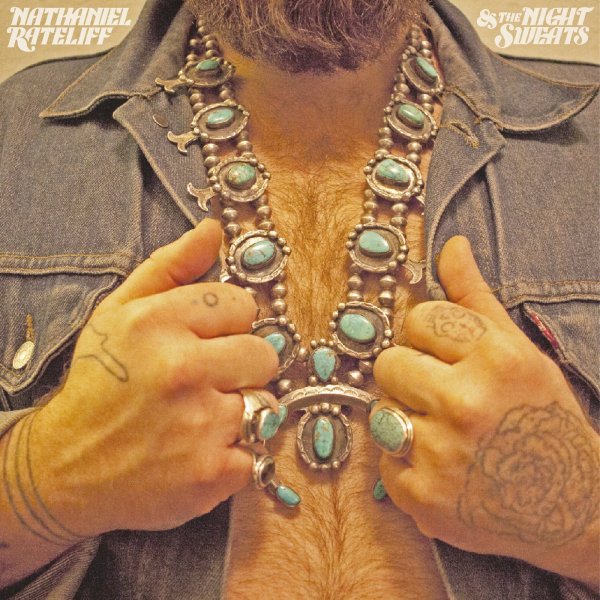
NATHANIEL RATELIFF & THE NIGHT SWEATS
s/t
(Stax)
Nathaniel Rateliff, a mighty beard of a man, with a voice as big as the great outdoors, was born in rural Missouri, in the buckle of the Bible Belt, and raised accordingly before moving to Denver when he was 18 to do the Lord’s work. Hearing John Lennon’s “Imagine” put an end to all that. Mostly, he built decks, drove trucks, and tended garden. Lucky for us, somewhere along the way he got caught up in the devil’s music. Fast forward a to million smoky bar gigs later, and Nathaniel Rateliff & The Night Sweats is signed to Stax, recording their debut with Richard Swift and riding the wave of euphoria set in motion by its late summer release — around mi casa it was the feel-good party record of the year. Nathaniel Rateliff & The Night Sweats mines a rich vein of unreconstructed vintage soul and maximum R&B shake-bamalama that jukes and jives and rumbles with the ghosts of Stax past (Wilson Pickett, Otis Redding), Sam Cooke and Bang Records-era Van Morrison. What’s not to love with the white hot intensity of thousand suns? The cruel irony is that the Nathaniel Rateliff & The Night Sweats is Rateliff moonlighting, his day job is making gorgeous, autumnal folk-rock under a pink moon that nobody seems to pay attention to. He released Closer, his third such enterprise, earlier this year and it’s not really surprisingly that the album’s introspective croon & swoon was drowned out by the fuss over the Night Sweats’ debut, which is hands down, as Rateliff declares in a new Beats Pill ad, “hotter than two dogs licking each other’s peepees.” — JONATHAN VALANIA
____________
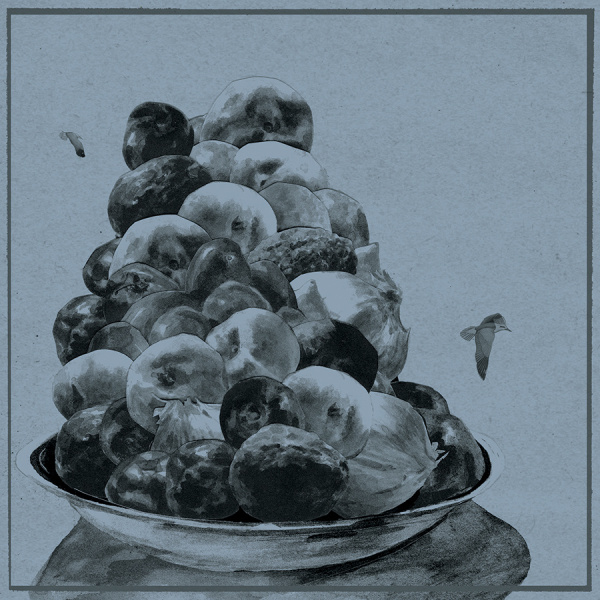
HOP ALONG
Painted Shut
(Saddle Creek)
The best thing about Painted Shut is that it starts out great and just keeps getting better. It begins out with a knock and a witness who just wants to talk and ends up as a collection of stories about old men fishing for eels who will outlive you because they don’t have a family, a crazy uncle locked in a room shaking a geranium, and having to shoot that old dog you loved so much — and that’s just first song. Sure, “Sister Cities” might be the climactic grand finale of the album, but every song leading up to it is better than the last, building in intensity from a song about witnessing child abuse, to seeing your twin sister in a West Virginia Waffle House, to a tune about Buddy Bolden, a schizophrenic jazz artist who died in an asylum in 1931 and whose remains can’t be located. The year 2015 was officially the year Hop Along, the brainchild of lead singer/guitarist Frances Quinlan, took over the reigns as the top band in Philly. Quinlan’s brother Mark is the man behind the chugging drum sound throughout the album, and guitarist Joe Reinhardt shows off his mind-numbing guitar skills in pockets throughout the album — most notably on “Texas Funeral” — making there more than just a few reasons to flip on Painted Shut late at night and listen to it until the asscrack of dawn. — TOM BECK
____________
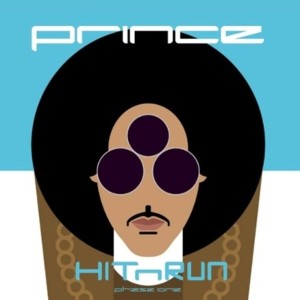
PRINCE
Hitnrun Phase 2
(NPG)
Prince has got to be high on the list of best-preserved rock stars but musically things have only snapped-back into focus somewhat recently. Hitnrun Phase 2 is a worthy follow-up to last year’s spectacular Art Official Age, compiling a whole album of memorable tunes and performances that stand up well beside his classics.”Groovy Potential” and “Stare” show off his ability to write hooks but also demonstrate how he surrounds those hooks with all sorts of delicious musical curlicues. The albums love of horn charts makes it somewhat unique in Prince’s catalog and the specific protest of “Baltimore” and “Black Muse” shows his Purple Badness inserting himself in our moment of history. So many old pop masters present nostalgic works that echo their predecessors, but his latest release is the sound of an artist building on his legacy rather than just riding it. — DAN BUSKIRK
____________
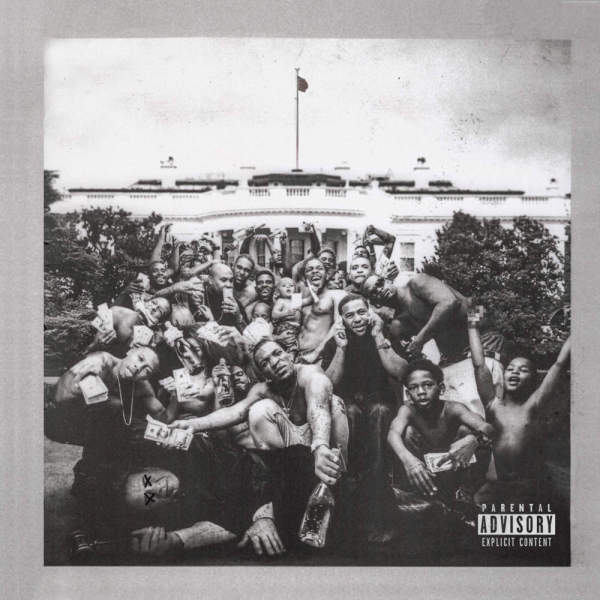
KENDRICK LAMAR
To Pimp A Butterfly
(Top Dawg Entertainment)
The consensus pick for Most Important Rapper Of The Moment probably would’ve earned the accolades even if To Pimp A Butterfly was only half as musical as it is. Consider Lamar’s BET Awards performance of “Alright” atop a cop car, with a giant tattered American flag in the background: It was potent theater — MC as avatar for a movement — and it secured his spot in the national conversation. The staging, however, hardly conveyed the song’s sonic depth. Later in the year, he reset the balance by rapping the entire album with an orchestra. Because, really, Butterfly is one for the heads, not just in its conduction of thinking-man’s jazz and connoisseur-level funk, but because Lamar himself approaches the tunes like a horn player. Connecting the notes across bars, collecting feeling across a whole line, playing with the rest of the band in mind — this rapper does all that, whether it’s an exquisite thumper (“King Kunta”) or a brutal one (“The Blacker The Berry”). His vocab is bigger than what he shows here, and even with all his vocal chops, he’s hardly the most tuneful rapper. But his command is undeniable — Butterfly is built to impress, and it’s built to connect. — JOE WARMINSKY
____________
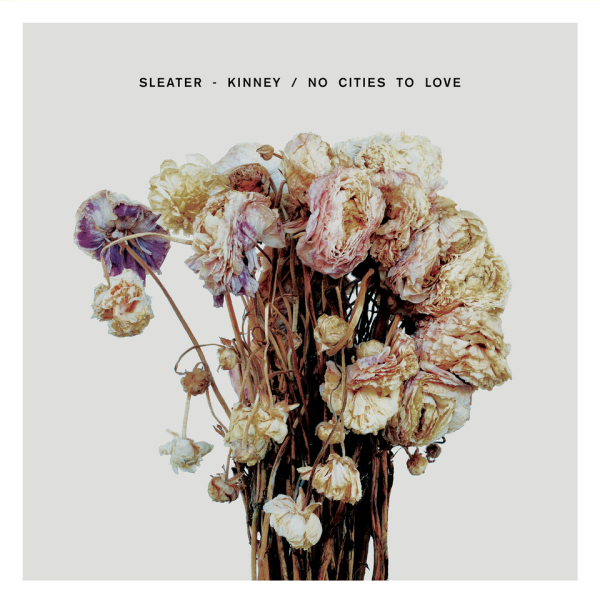 SLEATER-KINNEY
SLEATER-KINNEY
No Cities To Love
(Sub Pop)
In 2006 Portland indie-rock icons Sleater-Kinney went gently and far too quietly into the good night, hastily announcing an “indefinite hiatus” and separating after a brief tour. The band had shot for the moon with 2005’s The Woods album, which despite receiving critical acclaim failed to achieve mainstream success. This combined with the severe anxiety issues that singer/guitarist Carrie Brownstein was silently enduring (documented for the first time in her concise and brilliant 2015 memoir Hunger Makes Me a Modern Girl) led the band to a dead end. Thankfully the end was not a period but just a nearly decade long comma. Last January, Sleater-Kinney released No Cities to Love, an indelibly powerful comeback album that reaches and sometimes even clears the high bar set by the band’s previous albums. For thirty-two blissful minutes Corin Tucker’s trilling, soul-chilling vibrato vocals and divebombing Baritone guitar runs intersect perfectly at every possible angle with Brownstein’s sing-speaking vocals, quicksilver guitar lines and windmill fueled riffage while drummer Janet Weiss thunderously wallops her kit with unmatched fury and precision. On the best song of the album and one of the best songs of 2015, “Surface Envy,” Tucker and Brownstein sing “we win/we lose/only together do we break the rules.” Here’s hoping that the trio stays together and breaks more rules for a long time to come. — PETE TROSHAK
____________

ELDER
Lore
(Stickman Records)
You are in a forest. It’s dark. You’re not really sure how you got here. It is quiet and peaceful, or seems so at first. Then you begin to notice signs of chaos and maelstrom. The branches are vibrating, and so is the forest floor. On the horizon, massive trees become uprooted and tossed around and whatever is doing it is heading your way. Then you hear it. The trees are snapping to thunderous drums, the ground shakes like you were standing on a bass string the size of the equator. Your mind tries to shelter you from hearing the music, lest you be lost to it, stuck here, in the dark, and the gloom. You listen; you can’t help yourself. It is magnificent. You give in to the glorious sounds. Damn, this is a long song. And here comes another. You will be here forever. — MIKE WOLVERTON
____________

JAMIE XX
In Colour
(XL Recordings)
Even those of us not schooled in the micro-genres of UK dance music can love the nuances that Jamie XX brings to his debut solo album, In Colour. In contrast to the stark aesthetic that the man born Jamie Smith crafts as keyboardist and programmer with the XX, In Colour is saturated with bright, joyful hooks. Jamie XX is an in-demand club DJ, and tracks like “I Know There’s Gonna Be (Good Times)” (one of the year’s best singles in any genre) and “Gosh” work as dancefloor climaxes. He’s also a master of space and flow, and the album functions equally well as a solitary headphone experience. In Colour doesn’t just prop up a few cool singles, nor is it simply a tastemaker collection for connoisseurs. Sure, you could dissect the album to find the nods to old school jungle, Detroit techno and Chicago house music, but what makes In Colour exceptional is the inclusion of three tracks that feature vocals from his XX bandmates. The brief lines that Romy Madley Croft sings on “Seesaw” simply expand the record’s palette, but Oliver Sim’s turn on “Stranger In A Room” and Croft’s vocal on “Loud Places” up the ante with a pair of well-crafted songs and make In Colour work as an album, in the traditional, older-than-old school, start-to-finish sense. — STEVE KLINGE
____________
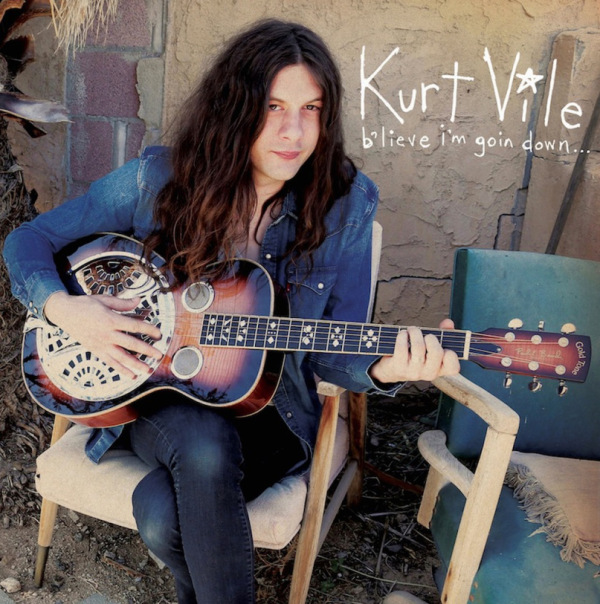
KURT VILE
B’lieve I’m Goin Down
(Matador)
Kurt Vile’s laid back drawl and affinity for steady pulsing rhythms connote a nonchalant stoner aesthetic. And although the drug refs and the acoustic instruments—Resonator guitar, banjo, piano—that pervade B’lieve I’m Goin Down bolster those impressions, they belie the care and beauty and self-reflective humor that distinguish Vile’s best work. These are some carefully thought-out, expertly played, well-crafted songs. And while Vile’s early work was lo-fi by necessity, B’lieve is crystal clear and beautiful, full of close-mic’d finger-picking and gently reverberating keyboards. Riddled with funny one-liners and existential conundrums, the album finds Vile examining, with the meditative eye of an armchair Zen philosopher rather than a navel-gazer, his role as a songwriter and ending up with more questions than answers. Things often get meta. “I couldn’t tell you what the hell it was supposed to mean,” he concludes in “Pretty Pimpin.” “What’s the meaning of this song and what’s this piece of wood? I don’t care it sounds so pretty, its changes so sublime,” he states in “Kidding Around.” There’s a lot of kidding around on B’lieve I’m Goin Down, but there’s also a lot of seriously pretty, sublime music. — STEVE KLINGE
____________

THE WEEKND
Beauty Behind The Madness
(Republic Records)
Beauty Behind The Madness opens to the sound of sirens announcing that a star has arrived in the form of one gravity-defying-coiffed Abel Makkonen Tesfaye AKA The Weeknd. The album is an impressively schizophrenic collection that sounds like The Weeknd’s long dark teatime of the soul – a night of dirty club crawling that ends with a one night stand followed by a period of regret-filled sleepless reflection. Beauty Behind the Madness spawned three massive singles – the slow jam falsetto fueled “Earned it,” the narcotic nightmarish prayer “The Hills” and the oversexed rubber band thump of song of the year contender “Can’t Feel My Face.” The Weeknd’s voice and charisma beg the obligatory comparisons to Michael Jackson, but spend enough time absorbing this album and it feels less manufactured than Jackson’s work and lyrically more honest and raw. Still, the ghost of MJ is in this machine, most pointedly during “Shameless,” a spaced-out acoustic ode to S&M which features the line “You want me to fix you but it’s never enough/That’s why you always call me cause you’re scared to be loved,” which suggests that not only does The Weeknd have some King of Pop in him, he might even have a little Springsteen, too. — PETE TROSHAK
____________
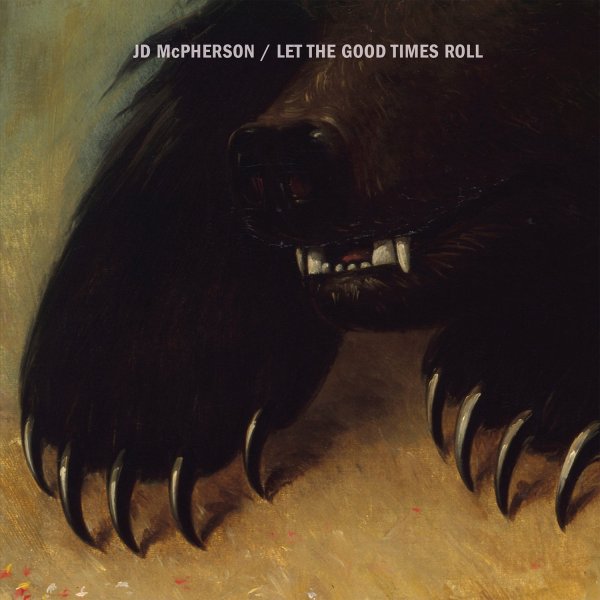
J.D. MCPHERSON
Let The Good Times Roll
(Rounder)
He can riff on the joys of old-school tremolo and tape echo, he’s a Sun Records nerd, he grew up on a ranch in Oklahoma, he was a middle-school teacher with a punk rock streak, and he’s friends with Dan Auerbach and Eric Church. Somewhere in that potentially precious bio is a rocker who intuitively understands the line between appreciation and shtick. Let The Good Times Roll is only his second album, but McPherson is already probing the cosmos for new ways to imbue the ’50s wildman thing with relevance. One way: Constructing a cavernous ballad, “Bridgebuilder,” that’s almost too much for his voice. Another way: Retrofitting groovy rhythms into twangier pastures (“It’s All Over But The Shouting,” “You Must Have Met Little Caroline”) with a subtle disregard for purism. Whatever his methods, much of the fun comes from hearing McPherson constantly challenge himself to be fresh. He’ll never be a teenager on the loose or a rascal with a death wish, but he’s a little bit out there, and it never gets old. — JOE WARMINSKY
____________
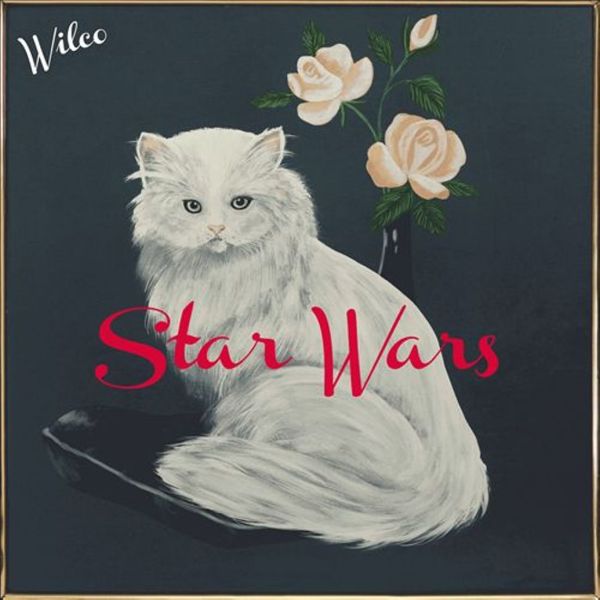
WILCO
Star Wars
(dBpm Records)
At a mere 33 minutes and 47 seconds, Wilco’s ninth album, Star Wars, is a breeze — almost ten minutes shorter than Wilco (The Album), the band’s next shortest album. And it’s fast on its feet — the mesmerizing five-minute long “You Satellite” is not only my favorite, it’s the only song on the entire album that’s more than four minutes long. Still, pound for pound, Star Wars punches above its weight. As for what it all means? As always with Wilco, who fucking knows? Some things are meant to be unknowable. The pyramids. Easter Island. The allure of Donald Trump. And the songs of Jeff Tweedy. Sonically speaking, the songs run the gamut from bloozy grit (“King Of You”) to glam-rock crunch (“Pickled Ginger”), from cosmic country (“Taste The Ceiling”) to Krautrock angularity (“Random Name Generator”) and all sorts of clever weirdness and pretty sadness in between. Plus it’s free, it’s got a cute cat on the cover and it’s got Star Wars in the title. What more do you fucking want? You want me to say it? OK, I’ll say it: The force is strong with this one. — TOM BECK
____________

DESTROYER
Poison Season
(Merge)
On 2011’s Kaputt, Dan Bejar smoothed the edges of his word-rich screeds and shifted the trajectory of his ever-malleable Destroyer project away from exhortation to introspection. Poison Season has some of Kaputt’s accessible qualities: lyrics that Bejar sings rather than declaims; sax solos that are comfortingly nostalgic; long passages of inviting instrumental melodies. But it’s a more anxious and artsy record, more Scott Walker’s Scott 4 than Roxy Music’s Avalon, more Talk Talk than soft rock. “Jesus is beside himself/Jacob is in a state of decimation,” Bejar croons to open the record, atop gentle swells of cinematic strings. The song is one of three iterations of “Times Square”: it returns once in the middle of the record as a rock song that situates itself between Bowie’s Young Americans and Springsteen’s The Wild, The Innocent and the E Street Shuffle, and once again as a piano and strings art-song coda. The rest of Poison Season shifts among those points: the charging “Dream Lover” — perhaps Destroyer’s most exuberant song yet—contrasts with the stark “Hell”; the slow, comforting build of “Bangkok” with the crashing, dramatic “Midnight Meet the Rain.” Somehow, it all fits together. Bejar’s lyrics have always created enticingly cryptic puzzles; on Poison Season, the music does, too. — STEVE KLINGE
____________

LOW
One And Sixes
(Sub Pop)
Ones and Sixes is a departure for Low and its two principals, Alan Sparhawk and Mimi Parker of Duluth (who happen to be my favorite indie rock Mormons). Alan and Mimi were apparently bored with the guitar/bass/drums arrangements they employed for the past 20 years. So for long-player #11, they built many of the songs with industrial noise samples. This is apparent from the opening notes of the first song, “Gentle,” with its over-driven rhythm track and feedback loops. On “No Comprende,” the industrial bass and drums are even more ferocious and distorted. “Landslide,” a 10 minute opus, is so bleak and relentless it could pass for a Swans song. All this adds a level of tension and desperation that isn’t present on recent Low records. Despite the noise, there’s still no mistaking this as anything but a Low record, and that’s mostly because of their amazing vocals and trademark harmonies. There are some quiet moments, such as the “Into You.” And they don’t leave out the melody, as there’s plenty on cuts like “What Part of Me” and “The Innocents.” It also helps that they leave space between the layers, so the pieces can breathe and the contrasts aren’t lost. It turns out that replacing the guitar/bass/drums arrangement for one of industrial distortion works just fine for Low. In fact, it results in a dark, atmospheric, and beautiful other-worldliness. — MIKE WALSH
____________

BEAUTY PILL
Beauty Pill Describes Things As They Are
(Butterscotch Records)
Beauty Pill Describes Things as They Are, this vaunted D.C. band’s first album in 11 years, follows the near-death experience of the band’s creative lead, Chad Clark. Having contracted viral cardiomyopathy, Clark had to undergo open-heart surgery and is lucky to be alive today. This fact is not lost on Clark, who opens the album with the words, “I want more life, fucker.” Later, in “Near Miss Stories,” he sings “Stethoscope on my chest, he says we’d better do this fast/One of these beats of your heart is gonna be the last.” But Beauty Pill Describes Things as They Are isn’t all high stakes internal medicine. It’s as much political and sociological (“Afrikaner Barista,” “Steven and Tiwonge”) as it is personal (“Dog With Rabbit In Mouth, Unharmed”), its arrangements rife with electronic textures and layered instrumentation. Inasmuch as Beauty Pill Describes Things as They Are stands as testimony to a new beginning for Clark, it’s also a remarkable new chapter in the creative growth of a band whose hiatus has thankfully come to an end. — SEAN CALDWELL
____________
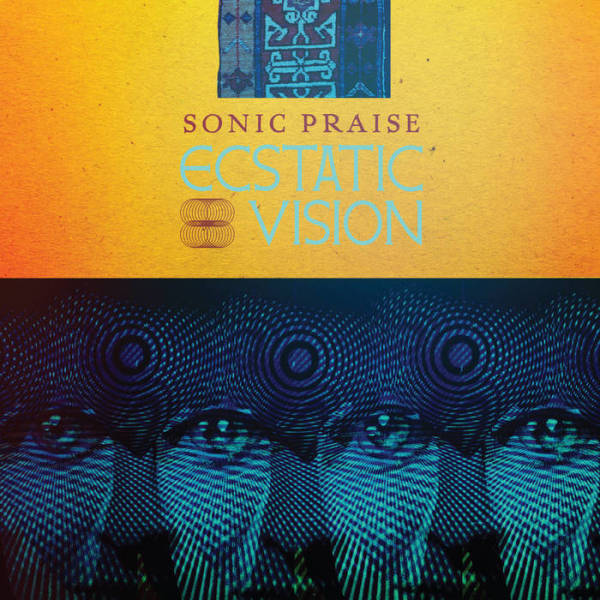
ECSTATIC VISION
Sonic Praise
(Relapse Records)
It’s weird that the first track on the debut album from this Philadelphia band is mostly nondescript Orange Goblin-y Stoner Rock. Because the 33 minutes that follow are a consciousness-bending ride under mountains, over heaven and through the moons of Neptune, bending the fabric of space and time until you can release your mind and slip sideways into the 14th Dimension. Or something like that. At live shows the trio is joined onstage by a saxophone player, and lead singer/guitarist Doug Sabolick (ex-A Life Once Lost) has been known to break out a melodica. Close your eyes and see if you end up in the Tunisian desert, a Moroccan bazaar, or a spiral arm of M83.–MIKE WOLVERTON
____________
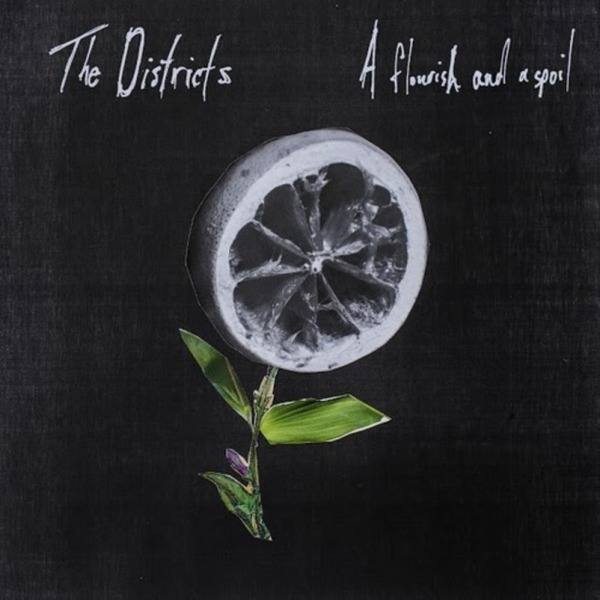
THE DISTRICTS
A Flourish And A Spoil
(Fat Possum)
Location, location, location — the three most important rules of real estate apply to indie rock as well, apparently. The Districts’ debut album, Telephone, was recorded while the band was still in high school, living with their parents in a tiny Pennsylvania town nobody knows about called Lititz. But when the band released Telephone, an album complete with straightforward, no-bullshit rock and roll ballads like “Lyla,” “Funeral Beds” and “Long Distance,” it never quite got the national ink it deserved. Why is that? Because the band was living in fucking Lititz, Pennsylvania, that’s why. Fast forward three years, The Districts move to Philly, release A Flourish and a Spoil, and of course people go apeshit. Granted, the album definitely builds upon the musicianship and songwriting shown on their debut. I mean, there’s the rollicking album opener “Fourth and Roebling,” the tempestuous “Young Blood,” which was easily one of the top songs of the year, and “Suburban Smell,” a song that serves as somewhat of an intermission for the album, as the solemn acoustic number about a mentally handicapped kid getting picked on at a high school football game separates two halves of what is a defining and breakthrough album for the little band from Lititz that could. — TOM BECK
____________

WAXAHTCHEE
Ivy Tripp
(Merge)
Waxahatchee’s wonderful Ivy Tripp by is a big step forward for Katie Crutchfield and friends. The arrangements on Ivy Tripp are spare like Crutchfield’s earlier releases, but she and co-producers Keith Spencer and Kyle Gilbride get creative. As a consequence, the record is full of surprising little gems that aren’t built on straight guitar strumming. Ivy Tripp announces its uniqueness with the first song, “Breathless,” which is based on a simple, distorted Moog riff supporting a plaintive vocal. It’s a spare yet beautiful song that has no drums and ends with some awesome vocal scattage. It’s noise pop beauteousness, a la Psychocandy. Keyboards appear throughout, and the backup vocals are wondrously inventive. A cheesy drum machine sound even pops up a time or two. But the real star of Ivy Tripp is Crutchfield. Her voice is strong and devoid of tremolo but can also be wispy and vulnerable. Plus, she apparently can’t write a song without a killer hook. Her lyrics read like disassociated journal jottings, but work to create non-specific yet convincing emotion. The subject matter is down-to-earth. There’s no melodrama. On Ivy Tripp, Crutchfield loosens up and finds her groove. The result is shimmering girl-pop and indie rock goodness — MIKE WALSH
____________
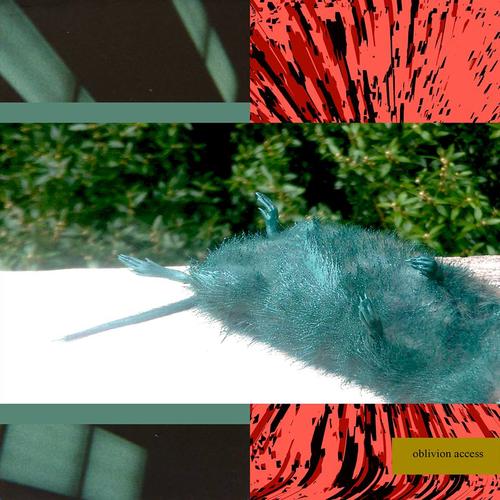
LIL UGLY MANE
Oblivion Access
(No Label)
For Christmas, Lil Ugly Mane gifted humanity Oblivion Access, which is not only his latest album, it is also his last. In the liner notes, he declares it “THE LAST OF THE FILTHY WATER FUNNELING OUT OF THE BATHTUB I’VE BEEN SOAKING IN FOR 5 YEARS,” (he always writes in ALL CAPS). I listened to it and nearly wept, not because the the album amounts to a prolonged battering of the eardrums, but because it is such a fitting end to the career arc of one of the most unique and virulently independent rappers in recent memory. Oblivion Access is an assault, a cacophonous array of warring sounds that, despite their best efforts, begrudgingly form a cohesive and stylistically consistent whole. The man who was once rap’s best Hieronymus Bosch impersonator ended his career situated somewhere in the terrifying and weird space between Max Ernst and a depraved Marcel Duchamp. But while his stylistic inclinations might have changed and evolved, his commitment to his uncompromising vision did not. As one apt Bandcamp commenter put it, “He finally did it. I can die now.” Yes you can Phallixander, we all can. — COLE NOWLIN
____________
 PROTOMARTYR
PROTOMARTYR
The Agent Intellect
(Hardly Art)
When listening to Protomartyr, I can’t help but inject a bit of romance into what might otherwise be just another rock band from Detroit. Following the band’s excellent 2014 release, Under Color of Official Right, The Agent Intellect is an album meant for full immersion, a start-to-finish post-punk-a-rama that manages to transcend the trappings of indie rock facsimile. Protomartyr owns this sound, from the high-octane jangling of “The Devil in His Youth” to the beautifully somber disposition of “Pontiac ‘87” to the metronomic pulsations of “Why Does It Shake?” Vocalist Joe Casey, who could be mistaken for Mark E. Smith’s low-octave distant nephew from the Motor City, doesn’t so much emote through on-keyness as he does through sheer presence, his oft-cryptic lyricism delivered with the narrative cadence of spoken word. With its jagged beat-making and zigzagging melodic angularity, The Agent Intellect defies any claim that guitar-centric music is no longer relevant or that albums as a whole carry little weight. — SEAN CALDWELL

